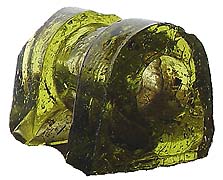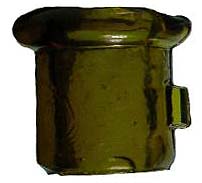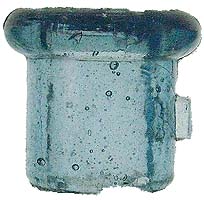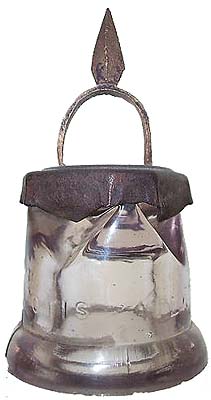Lightning rod insulators (abbreviated LRIs) actually predate communication
insulators! These insulators were used to insulate the rod itself from its
mounting as well as the grounding cable that would carry the current to the
ground down the side of the house or barn that these were normally used
on. There is currently no hobby numbering system for LRIs. Although
the bulk come in shades or aqua, there are also a great variety of styles and colors as shown below. Thanks to Dwayne
Anthony, Jim Colburn and Terry Drollinger for many of these great photographs!

|
 |
 |
 |
 |
 |
 |
 |
| The single groove and
cross top styles use a metal mounting plate around the base to
hold and the ground wire fits in the top slot and ties through the
hole. |
|
|
|
 |
 |
 |
 |
 |
 |
 |
| These less common tab
styles have a tab with a screw guide to make them more secure. |
These styles mount at
the base and have a hole to support a wire to tie the ground
cable. They are designed to the Stebbins
patent of June 25, 1867. |
|
 |
 |
 |
 |
 |
 |
| These are known as block styles which
are mounted on the outside with the ground wire through the
middle. |
|
 |
 |
 |
|
 |
 |
 |
 |
| These are tab styles -- they would
fit in a C shaped mount where the tab would prevent them from
coming loose. Thanks to Jim Colburn & Dwayne Anthony for
these photos |
|
 |
 |
 |
 |
 |
 |
 |
| These unusual styles are
like small spools and can be found in a wide variety of colors. |
|
 |
 |
 |

|

|
| Here are two examples
made to a July 3, 1855
patent by Robert D. Dwyer or Richmond, VA. The left
one is marked SALAMANDER/PATENTED with the patent date on the
other side. These great photographs courtesy of Jim Colburn. |
Purple Cross-top |
Through hole style with original hardware |
|
 |
 |
 |
 |
 |
 |
| One of the earlier
styles, the Otis insulator, nicknamed the wiggle top, was patented
August 26th, 1851 by George W. Otis of Lynn, MA. It is
believed that Sandwich glass made many of these. Thanks
again to Jim Colburn and Terry Drollinger for these pictures. |
|


 Return to the insulator identification page
Return to the insulator identification page